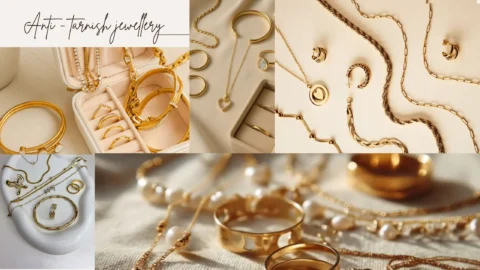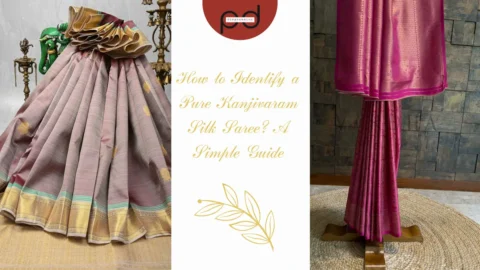Traditional Indian wear beautifully showcases the diverse culture and regions of India. These garments, which stem from centuries-old traditions, have transformed over time, never losing the deeper cultural meaning behind them. Traditional draped fabrics as well as modern fusion clothing, Indian clothing never fails to inspire fashionistas around the world. Traditional Indian fashion is one of the most seeping fashions throughout the world that is admired by many and has elegance, regional variations, and precise craftsmanship in one.
This blog is going to discuss the top ten Indian traditional dresses, the importance of traditional wears of both men and women and how these dresses have evolved over the years. Worn during festivals, weddings and daily use, Indian traditional wear is an immortal symbol of the country’s artistic and cultural heritage.
Olden Days Dresses in India
The elaborate and varied history of Indian apparel can be followed back to the Indus Valley Civilization (c. 2700 BCE), where both gentlemen and ladies donned uncomplicated thrown garments. Through time, fashion tastes evolved, persuaded by distinctive dynasties and cultural trades.
- Vedic Time (1500-500 BCE): Males essentially wore a rectangular piece of fabric wound around the waist—a dhoti—while females draped themselves in an antariya, an early structure of the saree. Women of higher castes sometimes embellished their antariyas with jewels. Farmers and laborers, though, often simply wrapped plain cloth around their forms.
- Maurya and Gupta Empires (321 BCE – 550 CE): Silk and cotton grew in popularity across this era, finding itself woven into materials worn by all. Women often dressed in sarees draped elegantly around their form, while turbans and wraps of varied ornate designs adorned men. The elite dressed lavishly as befitting their station.
- Mughal Era (1526-1857 CE): Persian trends took root in the subcontinent, blossoming into new styles. The anarkali emerged, a graceful garment loose yet shapely that honors tradition whilst embracing outside influence. A long skirt flows into fitted pants below, comfortable and dignified – an outfit that remains a choice for special occasions even today. Fashion was an art, with textiles and cuts developing into refine simply wrapped plain cloth around their forms.
Regional Dresses of India
India’s vast cultural diversity is beautifully reflected in its traditional attire, with each state having its own distinct clothing style influenced by climate, history, and customs. The various regions showcase their identity through traditional garments as diverse as the land itself. From the vibrant hues of Punjab to the minimal elegance of Tamil Nadu, traditional Indian outfits represent local heritage.
Punjab – Salwar kameez & kurta pajama
 In the northern state of Punjab, the classic salwar kameez for women consists of elegant, flowing lines – a loose tunic paired with breathable trousers and a graceful drape. Proud Punjabi men honor their Sikh roots through the kurta and pajama, complemented with a vibrant turban that speaks to both faith and hometown. Across green fields and in bustling bazaars, these clothes tell timeless stories of a people and place.
In the northern state of Punjab, the classic salwar kameez for women consists of elegant, flowing lines – a loose tunic paired with breathable trousers and a graceful drape. Proud Punjabi men honor their Sikh roots through the kurta and pajama, complemented with a vibrant turban that speaks to both faith and hometown. Across green fields and in bustling bazaars, these clothes tell timeless stories of a people and place.
Gujarat – Chaniya Choli & Kediyu

Women in Gujarat proudly don the chaniya choli, an ornate three-piece ensemble emblazoned with intricate mirrorwork and embroidery designs showcasing local artistry. Men don the kediyu, a signature flared jacket often worn during boisterous Navratri celebrations alongside vividly printed dhotis or churidar pants proudly displaying regional culture.
Rajasthan – Ghagra Choli & Angrakh

Rajasthani women traditionally attire themselves in the elegant ghagra choli, comprising a flowing skirt (ghagra), fitted blouse (choli), and delicate veil (odhani). Men are commonly seen wearing the angrakha, a dignified long coat distinguished by elaborate patterns, paired with dhotis or pajamas while enjoying lively festivities and local color throughout the vibrant state.
Maharashtra – Nauvari Saree & Dhoti Kurta

Across Maharashtra, the classic nauvari saree remains a staple for women to don, expertly draping the nine yards with practiced skill and ease of movement in mind. Men take pride in their uniquely patterned dhotis, often teaming the traditional wrap with a kurta and vividly coloured pheta wound around their heads.
West Bengal – Tant Saree & Dhoti Kurta

The women of West Bengal are renowned for their elegance, usually presented through the simple yet sophisticated tant saree, its flowing lightweight cotton adorned with subtle woven designs. Proud Bengali men typically dress in unity, their crisp white kurtas and dignified dhotis paired together to form the quintessential local garb known widely as the Panjabi.
Assam – Mekhela Chador & Dhoti Gamosa

The elegant mekhela chador worn by Assamese women is comprised of two pieces of silk or cotton fabric artfully wrapped around the body like a flowing cascade. Meanwhile, the typical male attire is marked by the dhoti – a long loincloth – paired often with a kurta top and completed by the gamosa, a multi-purpose handwoven cloth that can be tucked into the waist or draped casually across the shoulders.
Tamil Nadu – Kanjeevaram Saree & Veshti

Revered for its exquisite craftsmanship, the Kanjeevaram saree originating from Tamil Nadu is distinguished by its luxurious silk fabric and fine zari embroidery work that brings both vivid colours and intricate patterns alive on the splendorous drape. Men traditionally don the minimalist veshti, a simply wrapped loincloth, with an angavastram – a delicate woollen shawl – poised casually over the shoulders in a fashion both elegant and comfortable for the warm climate.
Kerala – Kasavu Saree & Mundu

Kerala’s traditional outfit is very simple and elegant. Women wear the Kasavu saree, which is a white or cream saree with golden borders. Men wear a mundu, which is a white dhoti with a golden border, and it is usually complemented by a shirt. “White is commonly worn by men in Kerala”.
Karnataka – Ilkal Saree & Panche

The traditional outfit of women in Karnataka is the Ilkal saree, which is a unique handloom saree with contrasting borders. Men wear a panche with silk or cotton shirt.
Himachal Pradesh – Pashmina Shawl & Churidar Suit

Women of Himachal wear colourful churidar suits with richly embroidered pashmina shawls. Men dress in woolen coats and churidars while the traditional Himachali cap helps defines their identity.
Indian clothing also reflects the rich traditions and artistic heritage from garments worn by the royal families of Rajasthan, elegant sarees from Bengal and colorful dresses from Gujarat.
Fabrics and Their Significance
The choice of fabric plays a crucial role in Indian traditional clothing. Some of the most popular fabrics include:
Tips for Wearing Indian Traditional Clothing
If this all sounds new to you when it comes to Indian fashion here are some key styling tips:
- Saree Draping Styles: Unique methods of draping are used in different regions—pick one that suits your body type the best.
- Salwar Kameez Fit: A perfect pant with a well-fitted tunic gives an elegant appearance.
- Dressing the Dressing: Accessories like jewelry, purses, and shoes must be harmonious with the dress and the occasion.
- Fabrics: Silk or georgette for festive events; cotton and linen for casual wear.
Traditional Indian Clothing for Females
Traditional Indian clothing for women differs by region and occasion and includes cultural influences. Rich fabrics dominate women’s attire alongside vibrant colours and intricate embroidery.
Cotton sarees along with salwar kameez and kurtis define everyday wear because they offer practicality with comfort.
During festivals, people favour sarees, lehengas and Anarkali suits made from silk and georgette materials.
For wedding functions, Indian brides choose either lehengas made from luxurious fabrics or Banarasi silk sarees or Kanjivaram sarees that feature gold embroidery.
Traditional Indian Clothing for Males
Traditional clothing for Indian men represents a wide range of cultural attire, both simple kurtas and regal sherwanis among others.
Casual wear – dhoti-kurtas and lungis made of cotton are commonly worn in rural areas and on other casual occasions.
Festive wear – Pathani suits, kurta-pajamas and sherwanis with embroidered details are preferred on festivals and weddings.
Traditional clothing includes regional variations such as Rajputi attire from Rajasthan Lungi-Mundu from South India and the Achkan coat from North India.
These outfits go well with traditional footwear like mojaris, kolhapuris and juttis.
Conclusion
Traditional Indian fashion encompasses historical clothing and cultural elements handed down through time as a display of artistic craftsmanship. People wear these outfits both daily and on special occasions like marriage because they represent traditional Indian heritage and timeless beauty. Modern people who embrace sustainable and handcrafted fashion tend to be interested in Indian textiles and conventional attire.
India’s rich heritage, artistry and diversity are reflected in traditional Indian wear which is more than just clothing. Every traditional dress, from the vibrant ghagra cholis of Rajasthan to the beautiful sarees of Tamil Nadu carries the legacy of generations. Besides representing local pride, these clothes are a bridge between the past and the present, changing yet remaining classic. Indian traditional wear is inspiring and being admired as the world goes handcrafted and sustainable. So enjoy the charm, traditions and art of Indian fashion whether it’s daily wear or for special occasions!
Explore, embrace, and celebrate the beauty of traditional Indian fashion!







